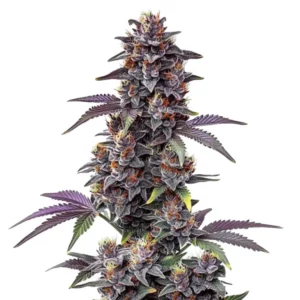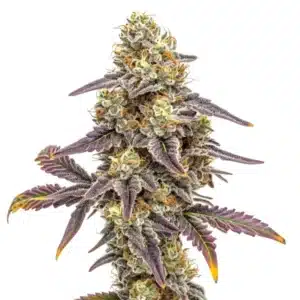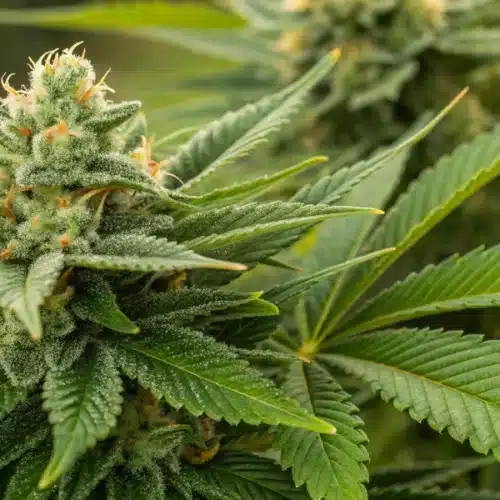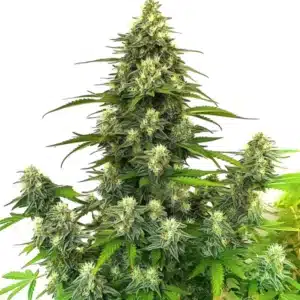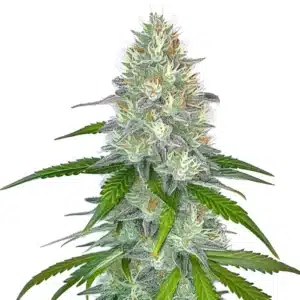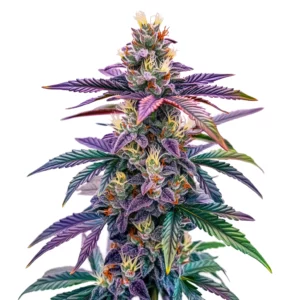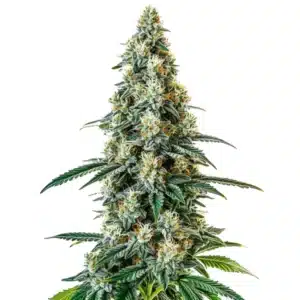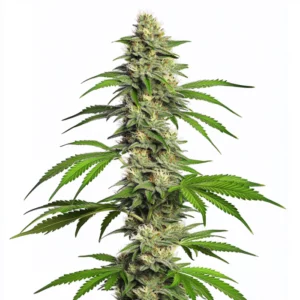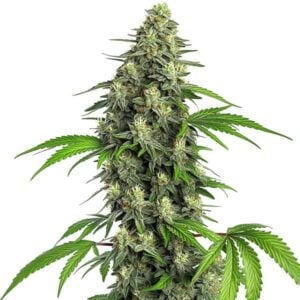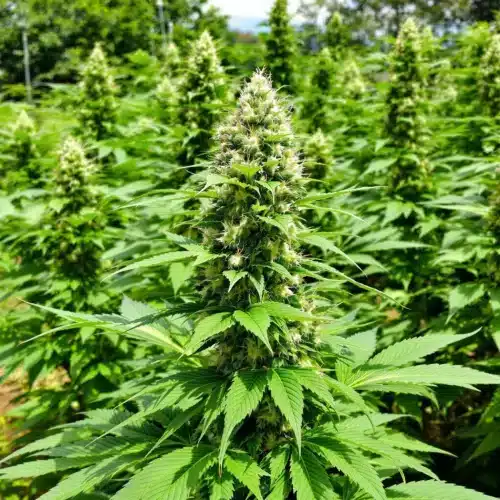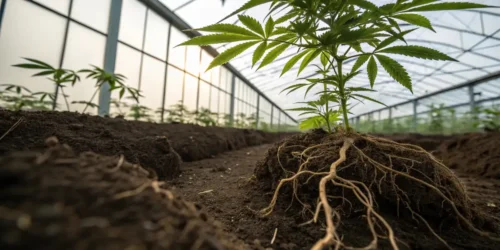Selecting the best soil for outdoor cannabis is a game-changer for any grower. Many experienced cultivators agree that using premium soil sets the stage for thriving plants. Garden experts stress that a high-quality medium is the foundation for abundant yields. When planning your garden, remember that investing in top-notch soil can make a significant difference. Every grower should view soil quality as an investment in future success, fueling nutrient uptake and enhancing root development. Ultimately, achieving the optimal mix is the first step toward a healthy, productive outdoor grow.
Qualities of Best Soil for Outdoor Cannabis
Choosing soil that meets the criteria for the best soil for outdoor cannabis is an art that blends science and intuition. Soil with a balanced pH, excellent drainage, and plenty of organic matter creates an environment where plants flourish. Gardeners often favor a medium naturally rich in beneficial microorganisms and essential nutrients.
Key characteristics include a loamy texture that holds moisture without becoming waterlogged, sufficient aeration for roots, and a composition that supports robust microbial activity. Many growers combine natural amendments with premium additives to replicate the best potting soil for outdoor cannabis in their gardens.
Soil Composition and Structure for Best Soil for Outdoor Cannabis
An optimal soil mix incorporates sand, silt, and clay in balanced proportions, ensuring that water retention and drainage work in harmony. Fertile soil enriched with decomposed organic matter and microbial life contributes to strong, healthy plants.
Many experienced growers mix natural compost with high-quality amendments to mimic the best potting soil for outdoor cannabis. Sourcing organic matter from trusted suppliers ensures that every batch maintains the right texture and nutrient profile.
Promos & Deals
Best Soil for Outdoor Cannabis: Natural Soil vs Store-Bought Mixes
Evaluating various growing mediums is essential when determining the right foundation for your outdoor garden. Both natural soil and commercial mixes have their benefits and potential drawbacks. Some cultivators prefer the authenticity of local soil, while others appreciate the consistency of store-bought formulations.
When assessing outdoor cannabis soil options, consider factors such as local climate, water availability, and the specific needs of your plant varieties. Understanding these differences can pave the way for a more successful cultivation experience.
Comparing Soil Options
A common debate among enthusiasts is whether the convenience of a commercial mix outweighs the richness of local natural soil. Many growers have achieved success using homemade amendments that closely replicate premium mixes while preserving the benefits of indigenous soil organisms.
Evaluating texture, nutrient density, and drainage in both scenarios helps cultivators make informed decisions. Experimenting with a blend of local soil and a commercial mix can often yield a balanced environment reminiscent of the best potting soil for outdoor cannabis.
Best Soil for Outdoor Cannabis: Top Soil Mix Recommendations
Selecting a soil mix that qualifies as outstanding for outdoor cannabis involves considering components such as organic content, drainage, and microbial activity. Many seasoned horticulturists recommend blends that combine natural compost with perlite and other organic amendments.
Using a combination of natural amendments and select commercial additives can produce a mix that rivals high-end products. Balancing nutrients with drainage elements is a top priority for achieving a medium worthy of growing cannabis outdoors.
Finding Regional Soil Solutions
Local climate and regional soil composition heavily influence what works best in your area. Factors like rainfall, temperature fluctuations, and native soil organisms should guide your mix adjustments.
Consulting local experts or university extension services may reveal custom recommendations tailored to regional conditions. Many growers also benefit from community forums where tips on recreating high-quality potting mixes are exchanged.
Preparing and Amending Soil
Effective soil preparation is foundational when aiming to achieve a superior mix for outdoor cannabis. Testing the soil for pH levels and nutrient content before planting allows for precise adjustments. Adding organic matter such as compost or manure improves texture and fertility.
Techniques to enhance outdoor cannabis soil include incorporating worm castings, biochar, and other natural fertilizers. Regular testing ensures that amendments remain well balanced, promoting vigorous root growth and overall plant health.
Enhancing Your Soil Mix
Incorporating amendments into your soil can be both fun and experimental. Organic materials like aged compost and bone meal are popular choices, and adding perlite or vermiculite can improve drainage, elevating your soil to the desired standard.
The process often involves adjustments and tests over several growing seasons. Keeping a detailed log of amendments and observations helps in fine-tuning the mixture to eventually replicate the benefits of the best potting soil for outdoor cannabis.
Best Soil for Outdoor Cannabis: Maintaining Soil Health Throughout the Grow
Once the garden is established, ongoing soil maintenance becomes a top priority. Continuous monitoring of nutrient levels and moisture supports long-term plant health. Regular mulching, watering, and periodic amendment applications are key to sustaining an optimal growing environment.
Many cultivators integrate organic practices such as crop rotation and cover cropping to naturally replenish soil nutrients. These practices help mimic the benefits of premium outdoor cannabis soil found in untouched natural settings.
Sustaining a Healthy Soil Mix
Maintaining a superior mix goes beyond initial preparation it requires continuous care throughout the plant’s lifecycle. Adding fresh organic matter during critical growth stages can boost soil vitality, while regular aeration and careful watering support healthy roots.
A proactive approach ensures that the benefits of high-quality potting mixes are sustained, resulting in improved yields, enhanced flavor profiles, and stronger pest resistance.
Advanced Tips for Outdoor Cannabis Cultivation
For dedicated growers, achieving a top-tier soil mix extends into advanced techniques and innovative practices. Strategic crop rotations, integrating green manure, and optimizing water retention are methods that can elevate soil quality.
In regions with challenging weather, anticipating environmental stresses and adjusting soil management practices can make a significant difference. Advanced monitoring systems and precise amendment techniques are often the result of years of hands-on experience.
Integrating Organic Mulches and Cover Crops
Organic mulches help retain moisture while gradually enriching the soil with decomposing matter. Cover crops such as clover or rye contribute organic material and suppress weeds naturally.
These practices improve soil structure and encourage better root penetration and water infiltration. Many growers report that combining natural techniques with targeted amendments creates conditions similar to the best potting soil for outdoor cannabis.
Seasonal Adjustments and Soil Management
Outdoor cannabis cultivation requires growers to adapt their strategies with the seasons. Spring is ideal for introducing amendments and testing nutrient balance, while summer may call for extra watering and mulching to keep the soil in peak condition.
During autumn, decomposing plant matter enriches the soil further, setting the stage for the next growth cycle. In winter, protective covers can shield the medium from freezing, ensuring long-term fertility and a robust grow.

Adapting Practices with Changing Climates
With increasing climate variability, adaptive soil management is becoming more important. Techniques such as drip irrigation help preserve moisture and maintain balance during extreme weather.
Some cultivators experiment with organic conditioners like compost teas and bio-stimulants to boost microbial activity, ensuring that soil quality remains high despite environmental changes.
Insights from Veteran Growers
Seasoned cultivators emphasize patience and persistence. One veteran grower noted that careful amendments over several seasons transformed his garden. Consistent use of natural materials like worm castings and compost helped create an ideal foundation.
Among the success stories, some strains have garnered attention for their robust performance. Growers have praised the growth of Gorilla Glue 4 Seeds, the aromatic quality of Girl Scout Cookies, and the exceptional yields of Blue Dream Seeds.
Budget-Friendly Strategies for High-Quality Soil
Not every grower can invest in expensive amendments. Resourcefulness and careful planning can still yield an outstanding medium. Homemade compost, locally sourced organic matter, and recycled garden waste are all cost-effective strategies.
Simple techniques like regular aeration and natural mulching can transform average soil into an exceptional mix for cultivating cannabis outdoors. These budget-friendly methods often rival commercial options in quality.
DIY Soil Amendment Recipes
Homegrown compost mixed with coffee grounds, eggshells, and yard clippings can produce a nutrient-dense amendment that enhances soil quality. Many DIY recipes focus on naturally balancing essential nutrients.
Experimenting with these recipes over time allows growers to tailor their mix to their garden’s unique needs, achieving results that compare favorably with more expensive alternatives.
Best Soil for Outdoor Cannabis: Integrating Technology in Soil Management
Modern technology has simplified monitoring and maintaining optimal soil conditions. Tools like moisture sensors and smartphone apps that track nutrient levels provide real-time insights into soil health.
Such innovations enable growers to optimize watering schedules, apply amendments precisely, and detect early signs of nutrient imbalances ensuring consistent, high-quality growing conditions.
Utilizing Digital Tools for Optimal Conditions
Digital platforms offering soil health analytics allow growers to pinpoint deficiencies and adjust their strategies effectively. These insights are invaluable for maintaining robust soil conditions.
Technology also promotes sustainability by reducing waste and conserving water, ensuring that amendments and irrigation are applied only when necessary.
Environmental Impact and Sustainability Considerations
Achieving superior soil quality for cannabis cultivation goes hand in hand with adopting sustainable practices. Organic methods, reduced chemical usage, and a focus on natural amendments contribute to an eco-friendly approach.
Such sustainable techniques help maintain a vibrant ecosystem that benefits both the plants and the local environment, fostering long-term soil fertility.

Sustainable Practices in Soil Management
Crop rotation, cover cropping, and organic mulching not only enhance soil quality but also conserve natural resources. These practices help maintain soil as a renewable resource for outdoor cultivation.
Community-supported agriculture and local composting programs further demonstrate how sustainability and quality soil management can work together effectively.
Practical Troubleshooting and Common Pitfalls
Even with careful planning, challenges in soil management can arise. Issues such as poor drainage, nutrient imbalances, or pH fluctuations may hinder plant development. Being prepared to troubleshoot these challenges is part of the cultivation journey.
Regular soil testing and a willingness to adjust practices based on observations can prevent minor issues from escalating, ensuring that the medium remains supportive of vigorous growth.
Avoiding Common Soil Management Mistakes
Overwatering can lead to waterlogged conditions and root rot, while neglecting periodic nutrient refreshment is another common error. Gardeners who monitor their soil’s health closely are better equipped to avoid these pitfalls.
Staying informed through grower communities and updated cultivation techniques can help refine your approach and keep your soil management routine effective.
Faqs about Best Soil for Outdoor Cannabis
How can I tell if my soil mix is right for my cannabis?
The best way to determine if your soil mix is performing well is by monitoring your plants closely. Healthy growth, vibrant leaf color, and steady development are strong indicators that your mix is balanced. Regular testing of pH and nutrient levels provides concrete data; ideal pH for cannabis typically falls between 6.0 and 7.0. Observing root development is also critical if roots appear white and abundant, it suggests proper aeration and drainage.
Additionally, comparing your plant’s progress with standard growth benchmarks for your strain can help you fine-tune the mix. Gardeners often adjust their formulations seasonally and note any changes in plant health, which is a practical method to ensure your soil remains optimal for outdoor cannabis.
What natural amendments are recommended for improving soil quality?
Natural amendments such as compost, worm castings, and biochar are highly regarded for boosting soil quality. These materials enrich the soil with beneficial microbes and organic matter. Incorporating amendments like bone meal or fish emulsion can also provide a slow release of nutrients, encouraging robust root development.
Many cultivators experiment with locally sourced compost and organic matter to simulate the best potting soil for outdoor cannabis. The key is to balance these additives so that they complement the native soil composition without overwhelming it. Over time, this method fosters a healthy, self-sustaining ecosystem that benefits plant growth.
How often should growers adjust their soil care routine?
Routine soil care is essential throughout the growing season. Many experienced growers evaluate their soil monthly or at key growth stages, such as pre-flowering or after a heavy rain. Regular soil tests help indicate whether amendments are needed to replenish nutrients or adjust pH levels.
Practical adjustments might be as simple as adding a layer of organic mulch or a light top-dressing of compost. The frequency of these adjustments depends on environmental factors and plant demands, but maintaining a proactive approach can significantly boost the overall health of your outdoor cannabis soil.


